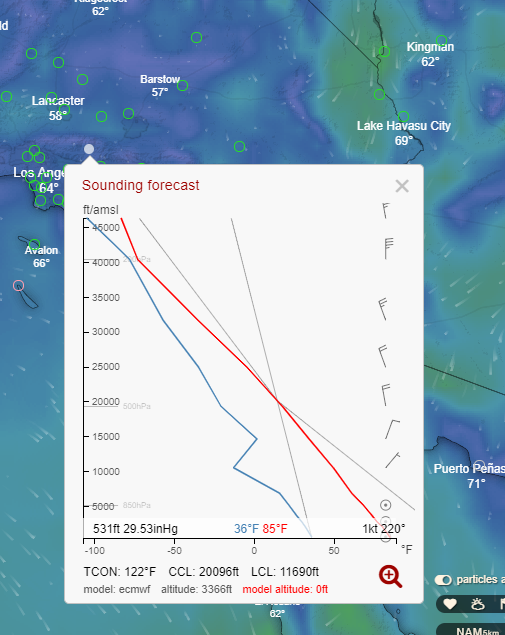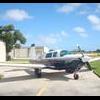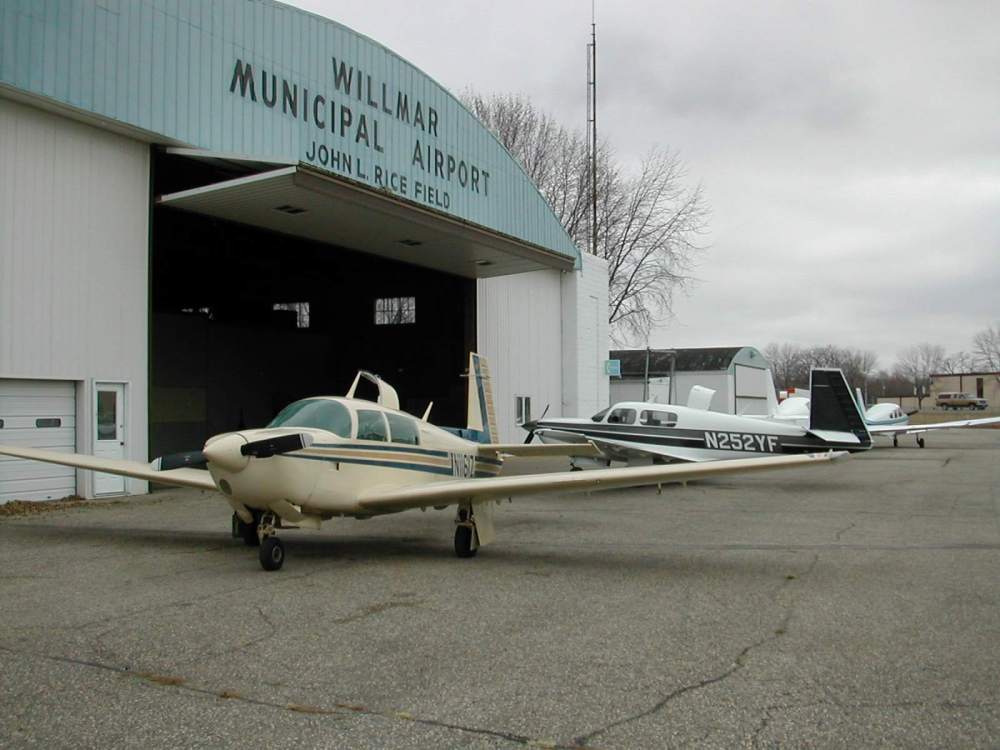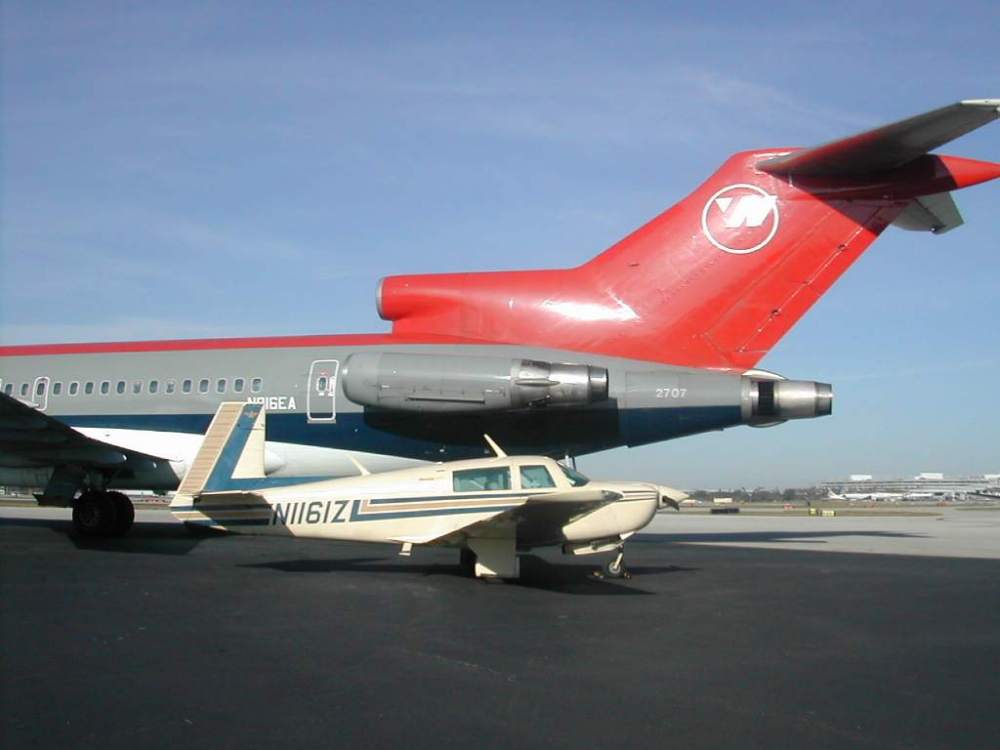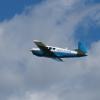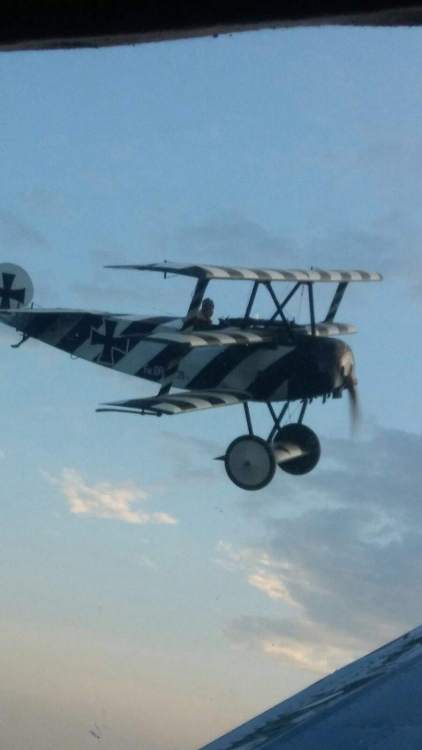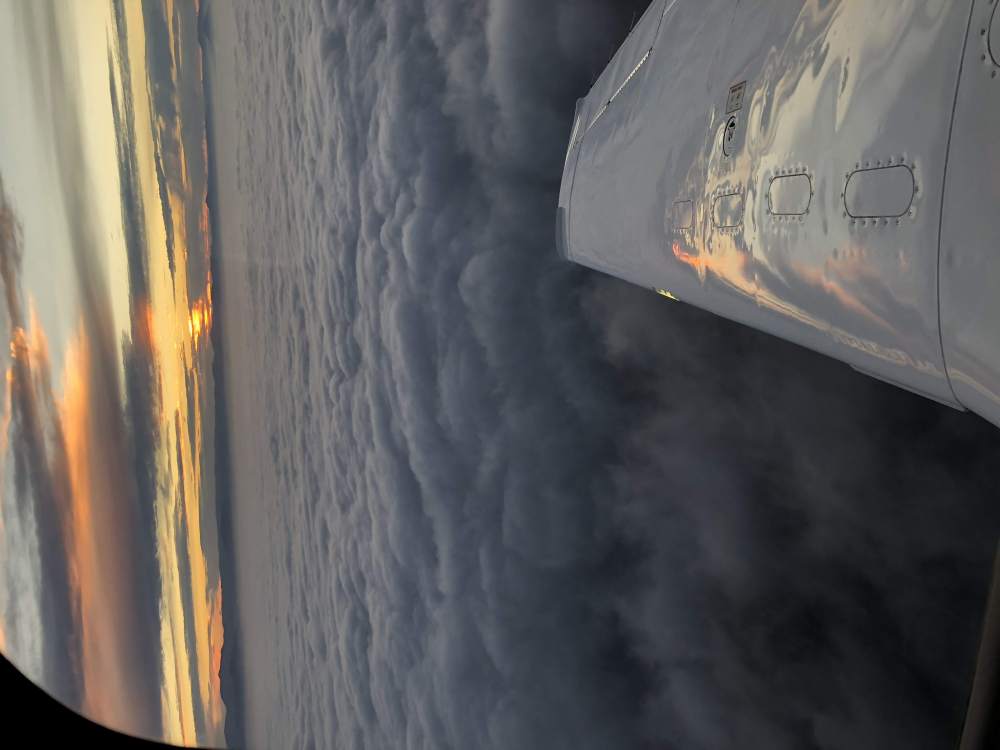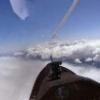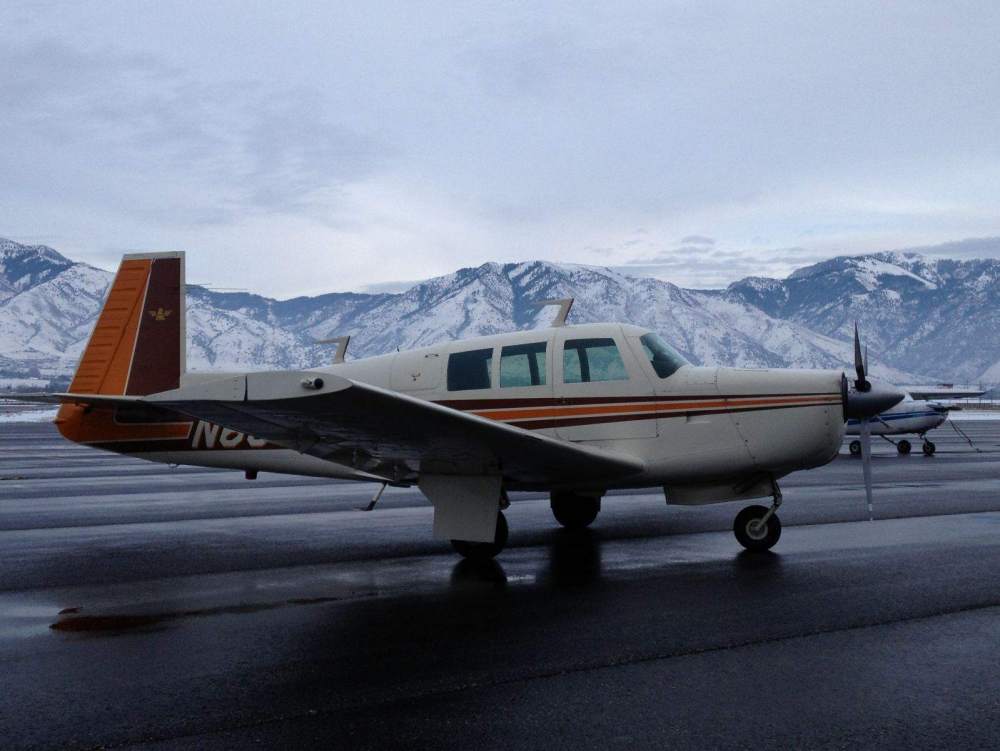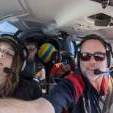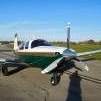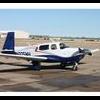Leaderboard
Popular Content
Showing content with the highest reputation on 10/26/2018 in all areas
-
https://www.windy.com continues to make improvements and additions to their website and their app. In addition to the METARS (with history), TAF's, and a host of other forecasting options they have now added Skew-T charts, all you have to do is right click on the map and select that option. https://community.windy.com/topic/6998/windy-offers-sounding-forecast4 points
-
Or tear it out and go with the electric actuator that one of our members here has developed I got mine.3 points
-
Catching up on posts... What started out as a dusty/windy flight in Salt Lake gave way to beautiful skies south of Vegas. A crazy dust cloud from a field that extended 60+ miles to the north, 45+ knot headwinds for a space of time, St George with a crosswind requiring full rudder, it was an adventure September 30th. More pictures and video on my blog. https://intothesky.us/2018/09/30/dusty-and-windy-salt-lake-st-george-corona/3 points
-
I know you're going to want to shoot me for saying this - but spend the extra $1000 and get the GTX-345 transponder. It will display traffic and weather on your GTN and who knows what else down the road . It's hard to justify $1000 now when spending the money, but you'll kick yourself later for not doing it.2 points
-
I agree with @RobertGary1 on both counts. I have never seen condensation in my tanks, nor have I ever gotten water from a hangared aircraft. Full tanks means 384lbs (64Gal) for an F model. In long distance mode I try to limit my legs to ~600nm. Most of my trips are between 300 and 500NM. There is just no reason to tanker around 2.5 to 3hrs of reserves. Plus, I have a family; 384lbs of fuel limits us to 675lbs of payload in the cabin. I keep between 120lbs (20Gal) and 240lbs (40gal) on board and fill as needed before departure. This gives me flexibility. If I'm traveling 300nm or less I can depart with 180lbs (30Gal) and put almost 900lbs in the cabin.2 points
-
2 points
-
My C has bladders. If I top off after I fly, the next day, I find that I can add 1-1 1/2 gallons more. Apparently the bladders expand a bit with full fuel making room for more. So, if I know that I'm going to need "full fuel", I fuel the evening before, then top off again before takeoff. However, I rarely plan my fuel such that 1 1/2 gallons is a significant factor. The bladders supposedly give the C a 54 gallon capacity instead of the stock 52. @Marauder and I have discussed this and have both experienced this oddity.2 points
-
2 points
-
That's great! The book may say your tanks only hold 118, but if you are patient when you are filling the tanks you should be able to squeeze in close to 130 for the times you want it.2 points
-
Steve and Car, it is amazing how much I have learned just from reading on MS! I will reach out to Kendrick! I am also truly amazed by how many more flying days I will have with the FIKI and turbo from my last Mooney. This really makes the plane so much more usefull!! Just need to overcome my terror of the scary looking computer screens!2 points
-
I thought mine was pretty low at 950UL. I was thinking about having it weighed at annual (with Brian) this next week. I don't think it has been weighed since new with updates through the years.2 points
-
2 points
-
2 points
-
Opinion on 1965 Paint Scheme with brown and burnt orange. Groovy baby!2 points
-
I just weighed an early Bravo, original paint & interior, Monroy tanks, all original King equipped, but with GNS480, GMX200 display, no TKS, a lightweight starter, and the useful load is 1002 lbs. These planes are heavier than you think and most of the changes over the years with lighter avionics don't help a lot. I tell people before I put in on the scales, to expect that the old girl has put on some weight over the years.2 points
-
Unfortunately... 1) It is the quality that counts, not the quantity... Fortunately... 2) I’m glad we have you guys here that supply so much quality! 3) MS is incredible in its way to connect Mooney people with questions, with other Mooney people, with real answers. 4) Some MSers are just a link in that all important chain. I’m thrilled when I help with one of those connections... 5) Other things that are really cool... pulling out a 20year old M20C memory that is pertinant to a conversation today, as it would have been 20years ago... 6) Where else can you get such a good cognitive exercise, and practice your spelling, word use, and ethics at the same time? hmmm, 3:00pm is so much brighter than 3:00am... You guys just made my day... Thank you and best regards, -a-2 points
-
And until then, Marauder is here for you. [emoji6] Sent from my iPad using Tapatalk Pro2 points
-
2 points
-
Paul, I've done them all in an M20J, but not an M20K. In any case, it won't be that much different.1 point
-
I wonder what mine is. According to the logs it was repainted in 1982. I believe it spent the first 7 years of her life on a ramp in Texas. Sent from my iPhone using Tapatalk Pro1 point
-
1 point
-
The bladders do have some sort of phenomenon going on with filling them to the max and/or STC indicated level. The 54 gallon system I have should have ~1.25 to 1.5 gallons of unusable per side. The useful portion should be 54.8 gallons according to the STC. That means I should be able to put 27.4 gallons in per side. When Terry and I did the install of the CiES senders we were really careful to measure the actual amount we could load. It ended up being 26 gallons per side. The next morning I was able to stick in ~ 1 gallon more per side. Since I will never operate the plane this way (topping off in the morning of a flight), I always will leave the usable at 26 per side. Sent from my iPhone using Tapatalk Pro1 point
-
1 point
-
In 20 years of being outside and not tipping off I can say it’s a wives tail. The fuel suspends more moisture than gets into the tank from venting. -Robert1 point
-
Thread drift about bladders, we also have a drop in level but was told that it's due to the slow passage of fuel between cells and takes several minutes to get maximum fuel. As to the OP I would not top off until the leaks are fixed. Many years ago I had an RD 350 with a cafe fuel tank that had a vent in the cap. Topped off at the end of the day on a hot night after a few minutes there was a huge explosion and when I ran to the garage the bike was in flames. Long story short the fuel expanded out the vent and fumes hit the water heater. Leaking fuel is a major fire hazard1 point
-
I almost never top off. Our operating procedures call for us to park the plane with 30 - 35 gallons of fuel. That's enough fuel for us to fly 2+ hours without needing to buy fuel before we go. By leaving out that last 30+ gallons of fuel, it gives us another 180+ pounds of useful payload. When I fly long cross country flights, I usually just fill to 50 gallons anyway since that's enough to fly 600 NM with reserves in our J. By parking with less than full tanks, it also gives me the opportunity to tanker fuel. I can buy more fuel than I need at an out station that is cheaper than the fuel at home, and then skip stopping at the pumps when I get back. A perfect example would be if I was doing an Angel Flight with a drop off at Eugene, OR (EUG). I could stop at Independence (7S5) on the way home and buy Phillips 66 gas. With the rebate from Phillips I would pay a net cost of $3.85/gallon vs $5.47 at home. I could fill the plane to 45 gallons at 7S5, land with about 33 gallons, and go straight to the hangar. The extra stop would only cost me about 1.5 or 2 gallons of extra fuel, but if I bought 35 gallons at 7S5, that would save me net about $45. Another example, on our way home from Skypark (BTF) in September, we stopped at Mountain Home, ID (U76) to stretch and check the plumbing. I filled to 59 gallons so I wouldn't need to buy fuel at home. Saved about $1/gallon times a lot of gallons.1 point
-
Get those leaks fixed. Wasted money and eventually a safety issue. I prefer to top off when I put the airplane away. It reduces the amount of air and possible water condensation that could enter the tanks when air cools. More importantly, I always tend to have more time when I land than when I am leaving. I usually want to get to the hangar, pre-flight and get going.1 point
-
I generally like to top off when I return to my home base for the reasons you suggested. Depending on schedule, time of day and weather I adjust accordingly. When away it will vary fill up when I get there or right before I leave, FS or SS??? In your case when returning to home base I would defer filling up until I was ready to go. That is until you get the seep fixed.1 point
-
That's the one - the logs show he did the Monroy Long Range Tanks.1 point
-
Congrats on passing the written. I passed that in 2009... then forgot to actually do my check ride so now it is worthless. (I scored really high on it for once)! Call All American they might be able to point you in the correct direction.1 point
-
Definitely make that call to him. Brian is the reason I fly from Long Island to Texas for my annuals and spend the week working on it side by side with him. He’s an excellent teacher and pilot. He will give you plenty of guidance in the use of the GFC700 and get you comfortable with it, as well as give you pointers and things to do so you can help maintain the airplane to those standards in between annuals. Steve1 point
-
I recall this airplane now. Unless I’m thinking of another Bravo on which Brian worked recently, I believe he did the tank expansion on this one. Another good sign.1 point
-
MS comes through again! That was it!! Feel like a DIP (tee hee hee)...I did RTFM, but only the section on Bluetooth. Never got around to the section on the DIP switch settings. Thanks again, Marauder!1 point
-
That looks pretty awesome in a menacing kind of way! Note on the instrument panel must say... To outrun menacing Tri-Fokkers... raise flaps... -a-1 point
-
There are rumors that Mooney, like the rest of the OEMs, has the paperwork to offer NXI upgrades to G1000 aircraft. It might be worth a call to Mooney expressing some interest in the NXI. Your plane is probably the only bravo with the GFC 700 autopilot, and the bet is the autopilot would be required for the upgrade. It’s speculation on my part, but if the NXI is coming it would be good to get your Bravo included in the paperwork.1 point
-
You guys are good! The iPhone photo app has a pretty handy orientation button... now. Click, edit, orient, save... Then bring into MS... Best regards, -a-1 point
-
When I send you some money for the paint, then I will have an opinion that matters. For now, my opinion is: the scheme looks great.1 point
-
@Jeev ...you might want to look at the 310, as long as that’s an option might as take a hard look at the 340, also 414 is a viable option is you need more room. Gotta love mission creep, I like the way you justify the upgrades! Me? I have no business looking at but I lust over the MU2 that’s listed over on BT. Now THATS a big upgrade from a C model.1 point
-
I find that oil consumption is tied closest to the age/time in service of the oil and the oil temperature. I burn oil at a higher rate in August than I do in February. I also find that consumption goes up as the oil get closer to 50 hours of use.1 point
-
The aircraft is routeinly flown over gross. I’m betting it’s a FIKI or at least a TKS equipped bravo. Useful load may include filling the TKS tanks. You may be able to gain some additional useful load by carrying less TKS fluid. The Bravo is a hell of a traveling airplane for one person, maybe two. Beyond that useful load is limited.1 point
-
The ADDS Icing site ADDS Ice Forecast Page has been very useful to me this decade. If I've encountered icing, the site showed it was likely. If it forecasts SLD or heavy ice at altitudes I have to use, I don't go there. Best ice escape tool seems to be a hot prop and a strong engine. De-Ice Boots are a short term aid only. Climbing has always worked for me, tho that's not proof of anything. Sometimes I have had to climb above FL200 to get above the ice.1 point
-
When I encounter ice, I try to incorporate a little bourbon and branch water. In most all other cases, I feel it should be avoided.1 point
-
And if you are like @201er, the entire country is in range for deviations.1 point
-
If you get behind the power curve in a Mooney you better be ready to land. You can get in a position that full power won’t get you out of. True short field technique requires a much steeper slower approach which doesn’t feel right to many Mooney pilots. This video is excellent.1 point
-
Just about every strip I can think of that even begins to be uncomfortably short (that the supermen of Mooneyspace could land a fully loaded Ovation blindfolded with hands tied behind their backs) has obstructions on either end. Usually they're honking big trees that forgot to stop growing when they hit fifty feet.1 point
-
Being that I'm now based at a 2000' strip with power lines on the threshold at the North end, this is an interesting thread to me. When I first started flying in there, I did the "drag it in" method, which worked well. However, when coming up on the power lines or the river on the other end, it always made me nervous about the "what if" the engine hiccuped. I now do the steeper approach, which feels safer and still yields short landings. As others have said, speed control is the key, but what that exact speed is varies by weight. I use 75 mph when fully loaded and 70 mph when light, which leaves plenty of safety margin for both stall speed and runway length. If I misjudged my speed and get caught in a 1' high float, I dump the flaps, which isn't standard procedure, but was taught by my Mooney CFI and works really well. If I'm sinking too fast, I add power and delay the flare just a bit. Like Shadrach, I can get my F stopped in the first 800' if I use a little braking. I normally just let the grass slow me down and have to add power to go all the way to the end since the runway is too narrow to turn around in the middle.1 point
-
I have done a lot of short field (<2000') work in the mid bodied airframe. The goal of any true short field procedure should be to arrive at the touchdown point with just enough energy to flare and little more. You will get all kinds of general advice, some of it will work some of the time... There is really only one way that I know of to make a true short field landing consistently: 1) Relatively steep, power off full flap descent slowing to 1.1Vso on short final. This more than any other is a pitch for speed, throttle for altitude situation. 2) Very little to no round out but more a gentle flare begining around 35' AGL becoming aggressive just prior to touchdown. It's not a comfortable procedure. It's not a procedure with tremendous margins (though safe enough with practice). If done at the proper speed, you will run out of elevator travel just as the plane touches down. The last few feet of ground effect will provide additional cushion. The above will technique will yield incredibly short landings in the mid body. I have had my F down and stopped inside the first 800' of runway many times using this procedure. Practice getting the procedure right on a longer runway without to much focus on TD point. The focus should be on speed control (pitch) and flare. The wing should be unloaded during the last part of the descent. The flare should use all remaining flying energy. IT's easy to know you've succeded, because the airplane is fully planted even with the yoke full aft. I do not like the shallow, high AOA "drag it in just above stall" method. If the engine hiccups, you've almost no energy or altitude left to work with. The method I describe is a slow but low AOA descent transitioning to high AOA full stall in th flare. You need to have an approximate idea of stall speed by weight. Using gross stall numbers when light creates float. carrying power to the threshold should only be needed in a headwind. I like to loosen the vernier on the throttle for quick and precise throttle inputs (just remember to tighten on take off).1 point
-
Well, I received the covers yesterday and installed them this afternoon. At first I thought the fit wasn’t right but after pulling the straps, it all snugged up fine. They did forget to ship the headrest covers and I will call them in the morning to find out where they are. The quality of skins is excellent. I have sat on other sheepskin covers but I will say these are extremely comfortable. Sent from my iPhone using Tapatalk Pro1 point
-
That is brilliant Patrick - well done! Please check your PMs - I want to copy this for a Bravo1 point
-
So, I figured I'd follow Tony's advice above, but I inspected it good in the process..... I fiddled with it and fiddled with it trying to get it to stick and it just would not. Not even a little bit. So, I'm befuddled.... I decide to reproduce the forces applied by the vacuum boot... it sticks at the top if I do it just right.... with a bit of practice I can get it to stick at will.... It's not sticking due to friction, lack of lube, it's actually hanging up on something. So, I apply a lot of light, and finagle myself into angles that allow me to see what's going on. Turns out the top of the step right at the bevel was hanging up on the inside of the fuselage. A bit of mild bending and presto. 7 landings since and the step has worked perfectly each time.1 point





